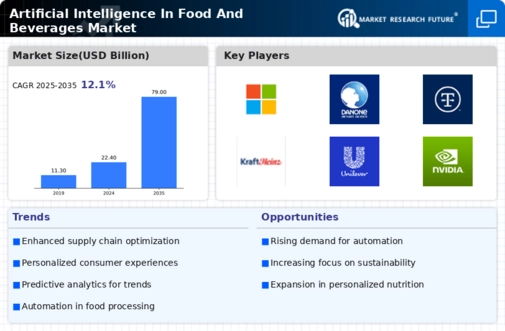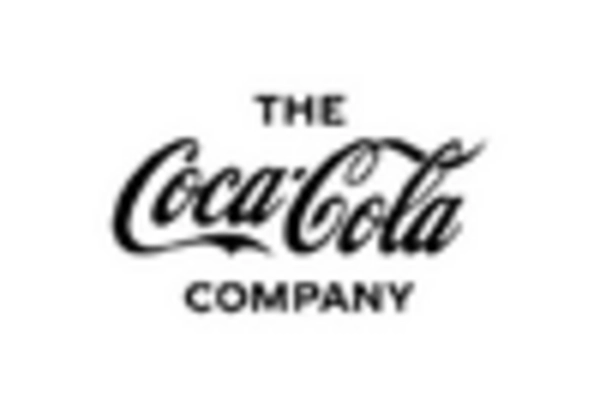Efficiency in Supply Chain Management
Efficiency in supply chain management is becoming increasingly critical within the Artificial Intelligence In Food And Beverages Market. AI technologies enable companies to optimize inventory management, forecast demand, and reduce waste. For instance, predictive analytics can enhance supply chain visibility, allowing businesses to respond swiftly to market fluctuations. A study suggests that AI-driven supply chain solutions could reduce operational costs by up to 20%. As companies strive for sustainability and cost-effectiveness, the integration of AI in supply chain processes is likely to become a standard practice, thereby driving growth in the market.
Advancements in Food Safety Technologies
Advancements in food safety technologies are significantly influencing the Artificial Intelligence In Food And Beverages Market. AI systems are employed to monitor food quality, detect contaminants, and ensure compliance with safety regulations. The implementation of AI-driven solutions can lead to a reduction in foodborne illnesses, which affects millions annually. According to estimates, the economic impact of foodborne diseases is around USD 15.6 billion in the United States alone. As consumers become more health-conscious, the demand for safer food products is likely to propel the adoption of AI technologies in food safety, thereby enhancing brand trust and market competitiveness.
Rising Demand for Personalized Nutrition
The increasing consumer inclination towards personalized nutrition is a pivotal driver in the Artificial Intelligence In Food And Beverages Market. As individuals seek tailored dietary solutions, AI technologies facilitate the analysis of vast datasets to create customized meal plans and product recommendations. This trend is underscored by a report indicating that the personalized nutrition market is projected to reach USD 11.5 billion by 2026. AI algorithms can analyze consumer preferences, health data, and dietary restrictions, thereby enhancing customer satisfaction and loyalty. Consequently, food and beverage companies are increasingly adopting AI-driven solutions to meet this demand, which is likely to reshape product development and marketing strategies.
Growing Interest in Sustainable Practices
The growing interest in sustainable practices is a notable driver in the Artificial Intelligence In Food And Beverages Market. Consumers are increasingly favoring brands that prioritize sustainability, prompting companies to adopt AI solutions for resource optimization and waste reduction. AI can analyze production processes to identify inefficiencies and suggest improvements, which can lead to lower carbon footprints. Reports indicate that the sustainable food market is expected to reach USD 1 trillion by 2030. As sustainability becomes a core value for consumers, the integration of AI in food and beverage operations is likely to enhance brand reputation and market share.
Integration of AI in Marketing Strategies
The integration of AI in marketing strategies is transforming the landscape of the Artificial Intelligence In Food And Beverages Market. Companies are leveraging AI to analyze consumer behavior, segment audiences, and personalize marketing campaigns. This data-driven approach allows for more effective targeting and engagement, which can lead to increased sales. A survey indicates that businesses utilizing AI in marketing see a 30% increase in conversion rates. As competition intensifies, the ability to harness AI for marketing purposes is likely to become a crucial differentiator, driving innovation and growth within the industry.


















Leave a Comment